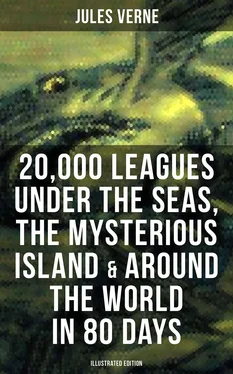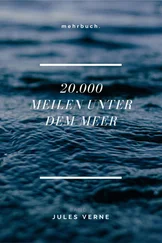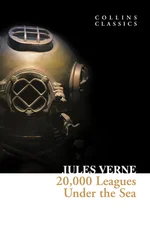So, in our swift cruise through these deep strata, how many vessels I saw lying on the seafloor, some already caked with coral, others clad only in a layer of rust, plus anchors, cannons, shells, iron fittings, propeller blades, parts of engines, cracked cylinders, staved-in boilers, then hulls floating in midwater, here upright, there overturned.
Some of these wrecked ships had perished in collisions, others from hitting granite reefs. I saw a few that had sunk straight down, their masting still upright, their rigging stiffened by the water. They looked like they were at anchor by some immense, open, offshore mooring where they were waiting for their departure time. When the Nautilus passed between them, covering them with sheets of electricity, they seemed ready to salute us with their colors and send us their serial numbers! But no, nothing but silence and death filled this field of catastrophes!
I observed that these Mediterranean depths became more and more cluttered with such gruesome wreckage as the Nautilus drew nearer to the Strait of Gibraltar. By then the shores of Africa and Europe were converging, and in this narrow space collisions were commonplace. There I saw numerous iron undersides, the phantasmagoric ruins of steamers, some lying down, others rearing up like fearsome animals. One of these boats made a dreadful first impression: sides torn open, funnel bent, paddle wheels stripped to the mountings, rudder separated from the sternpost and still hanging from an iron chain, the board on its stern eaten away by marine salts! How many lives were dashed in this shipwreck! How many victims were swept under the waves! Had some sailor on board lived to tell the story of this dreadful disaster, or do the waves still keep this casualty a secret? It occurred to me, lord knows why, that this boat buried under the sea might have been the Atlas, lost with all hands some twenty years ago and never heard from again! Oh, what a gruesome tale these Mediterranean depths could tell, this huge boneyard where so much wealth has been lost, where so many victims have met their deaths!
Meanwhile, briskly unconcerned, the Nautilus ran at full propeller through the midst of these ruins. On February 18, near three o’clock in the morning, it hove before the entrance to the Strait of Gibraltar.
There are two currents here: an upper current, long known to exist, that carries the ocean’s waters into the Mediterranean basin; then a lower countercurrent, the only present-day proof of its existence being logic. In essence, the Mediterranean receives a continual influx of water not only from the Atlantic but from rivers emptying into it; since local evaporation isn’t enough to restore the balance, the total amount of added water should make this sea’s level higher every year. Yet this isn’t the case, and we’re naturally forced to believe in the existence of some lower current that carries the Mediterranean’s surplus through the Strait of Gibraltar and into the Atlantic basin.
And so it turned out. The Nautilus took full advantage of this countercurrent. It advanced swiftly through this narrow passageway. For an instant I could glimpse the wonderful ruins of the Temple of Hercules, buried undersea, as Pliny and Avianus have mentioned, together with the flat island they stand on; and a few minutes later, we were floating on the waves of the Atlantic.
Конец ознакомительного фрагмента.
Текст предоставлен ООО «ЛитРес».
Прочитайте эту книгу целиком, купив полную легальную версию на ЛитРес.
Безопасно оплатить книгу можно банковской картой Visa, MasterCard, Maestro, со счета мобильного телефона, с платежного терминала, в салоне МТС или Связной, через PayPal, WebMoney, Яндекс.Деньги, QIWI Кошелек, бонусными картами или другим удобным Вам способом.












